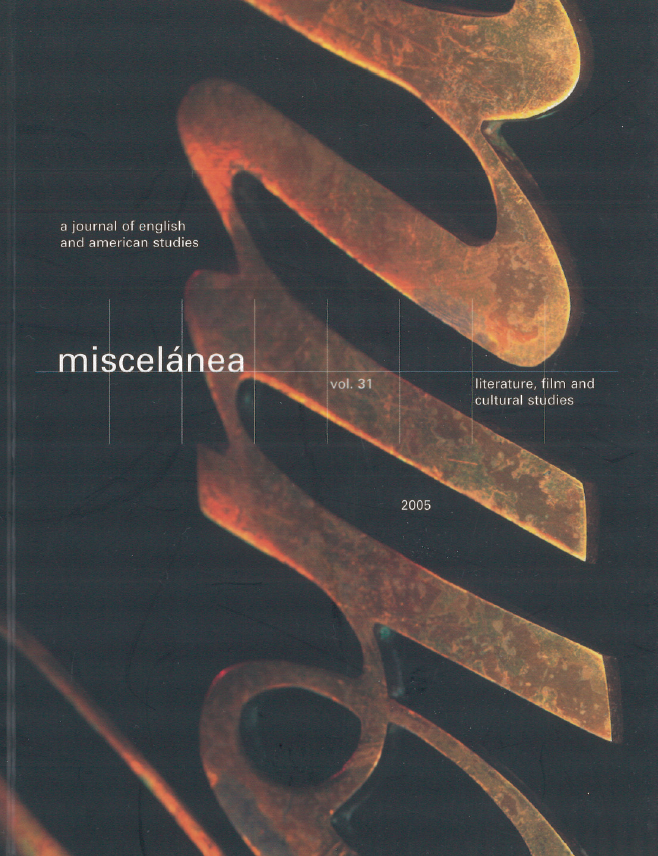La metáfora genérica y el lenguaje político periodístico
DOI:
https://doi.org/10.26754/ojs_misc/mj.200510385Keywords:
generic metaphor, event metaphor, metonymy, patterns of interaction, conceptual continuumAbstract
Lakoff and his collaborators (Lakoff, 1990 y 1993; Lakoff & Turner, 1989), have postulated the existence of at least the following generic metaphors: The Event Structure Metaphor, The Great Chain of Being, GENERIC IS SPECIFIC and EVENTS ARE ACTIONS. In this article we will try to prove that most metaphors used to talk about politics belong to either The Great Chain Metaphor or the Event Structure Metaphor. However, only the latter functionally structures the whole domain of politics while the Great Chain Metaphor only affects partial aspects of the field. We shall try to elucidate why this is so and how it affects the cognitive approach to metaphor in general. We shall then try to explain the possible role of the other generic metaphors: GENERIC IS SPECIFIC and EVENTS ARE ACTIONS. Furthermore, we have considered three metaphors of generic level: ACTIONS ARE EVENTS, ACTIONS ARE ACTIONS and ACTIONS ARE STATES. Finally, the conceptual connection between structural and ontological metaphors is relevant to certain issues dealing with Cognitive Linguistics, namely, conceptual interaction and continuum.
Downloads
References
CHILTON, Paul. 1996. Security Metaphors: Cold War Discourse from Containment to Common House. Nueva York: Peter Lang.
— 2002. “Do something!: conceptualising responses to the attacks of 11 september 2000”. Journal of Language and Politics, 1 (1): 181-195.
CHILTON, Paul y Christina SCHÄFFNER. 1997. “Discourse and politics”. En van Dijk, Teun Adrianus. (ed.). Discourse as Social Interaction. Dis course Studies. Vol. II. Londres: Sage Publications: 206-230.
CHING, Marvin K. L. 1993. “Games and play: pervasive metaphors in American life”. Metaphor and Symbolic Activity, 8: 43-65.
GRADY, Joseph. 1997. “THEORIES ARE BUILDINGS revisited”. Cognitive Linguistics, 8 (4): 267-290.
HOWE, Nicholas. 1988. “Metaphor in contemporary American political discourse”. Metaphor and Symbolic Activity, 3: 87-104.
KÖVECSES, Zoltán y Günter RADDEN. 1998. “Metonymy: developing a cognitive linguistic view”. Cognitive Linguistics, 9 (1): 37-77.
LAKOFF, George. 1990. “The Invariance Hypothesis: is abstract reason based on imageschemas?” Cognitive Linguistics, 1 (1): 39-74.
— 1991. “Metaphors and war: the metaphor system used to justify war in the Gulf” Lentz Peace Research, 23: 25-29.
— 1993. “The contemporary theory of metaphor”. En Ortony, Andrew. (ed.). Metaphor and Thought, 2ª ed.. Cambridge: Cambridge U. P.: 202-251.
LAKOFF, George y Mark JOHNSON. 1999. Philosophy in the Flesh. The Embodied Mind and its Challenge to Western Thought. Nueva York: Basic Books.
LAKOFF, George y Mark TURNER. 1989. More than Cool Reason. Chicago y Londres: University of Chicago Press.
MORENO, María Ángeles. 2004. La Metáfora Conceptual y el Lenguaje Político Periodístico: Configuración, Interacciones y Niveles de Descripción. [Tesis Doctoral, disponible en red]. Universidad de La Rioja. http://publicaciones.unirioja.es/tesis/tesis28.shtml
PANTHER, Klaus-Uwe y Linda THORNBURG. 1999. “The potential for actuality metonymy in English and Hungarian”. En Panther, Klaus-Uwe y Günter Radden. (eds.). Menonymy in Language and Thought. Ámsterdam y Filadelfia: John Benjamins: 333-359.
RUIZ DE MENDOZA, Francisco José. 1996. “Semantic networks in conceptual structure”. EPOS, 12: 339-356.
— 1998. “On the nature of blending as a cognitive phenomenon”. Journal of Pragmatics, 30 (3): 259-274.
RUIZ DE MENDOZA, Francisco José y Olga Isabel DÍEZ VELASCO. 2002. “Patterns of conceptual interaction”. En Dirven, René y Ralf Pörings. (eds.). Metaphor and Metonymy in Comparison and Contrast. Berlín y Nueva York: Mouton de Gruyter: 489-531.
RUIZ DE MENDOZA, Francisco José y José Luis OTAL. 2002. Metonymy, Grammar and Communication. Granada: Comares.
RUIZ DE MENDOZA, Francisco José y Lorena PÉREZ. 2001. “Metonymy and the grammar: motivation, constraints, and interaction”. Language and Communication, 21: 321-327.
Downloads
Published
How to Cite
Issue
Section
License
Copyright (c) 2005 María Ángeles Moreno Lara

This work is licensed under a Creative Commons Attribution-NonCommercial 4.0 International License.


